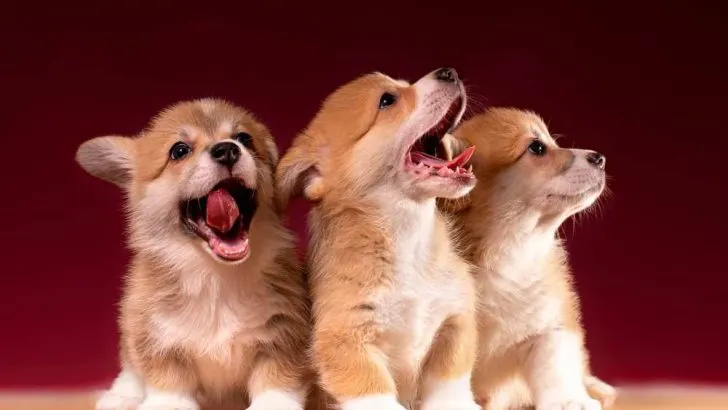There is no denying that corgis are a trendy dog breed. So much so that they have become a common staple at royal courts all around the world. The English queen Elizabeth II and her parents are probably the most famous Corgi breeders in history.
This popularity has a rock-solid foundation. Corgis are smart and sociable dogs that like good scratching but still have a pinch of German Sheppard loyalty and endurance in them. Throw into account a lovable look, and you’ll get a winning combination.
But, let’s get honest here – the first impression you get from these small wonders is that they are cute and, most important fluffy as dreams themselves. You simply can’t go against that long, cuddly coat.
So, what happens when you buy a Corgi, and its coat fails to grow into a beautiful fuzz we all know and love. When do corgis get fluffy, and is it possible to encourage the growth of their coat?
If you are bothered by these questions, fasten your seatbelts, we are going to break them down one by one.
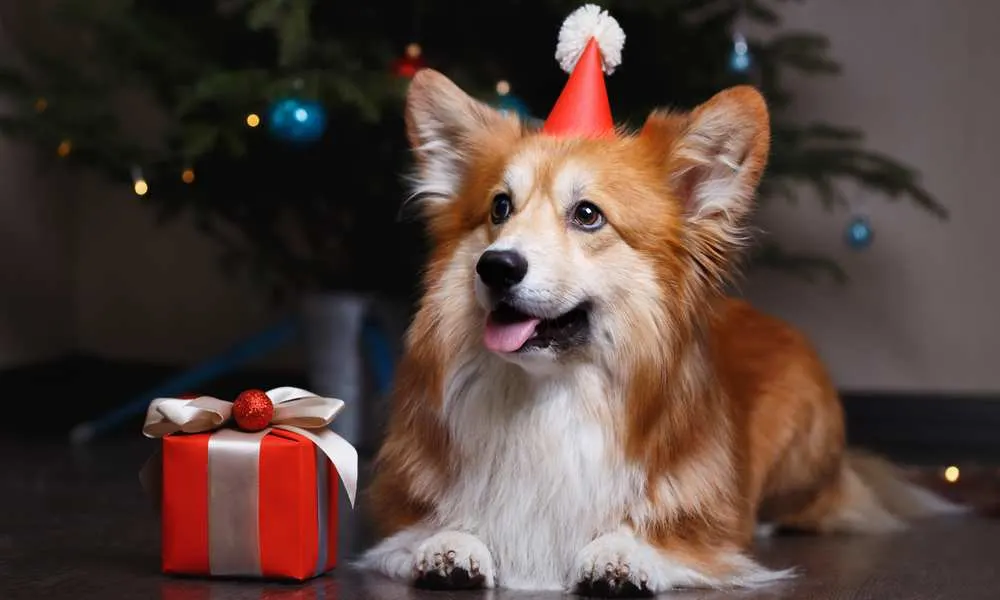
What Makes A Corgi Fluffy?
Well, to answer this big question, we will need to go back in history for a bit.
You see, in the distant past, Corgis were divided into two distinct breeds – Pembroke Welsh and Cardigan Welsh.
The first breed of Corgis was a member of the Teckel family and was bred in Wales ever since 1200 BC. Pembroke Welsh corgis started their journey by breeding the Spitz-type dogs with the original Cardigan Corgis by the Flemish Weavers who migrated to Wales in the 12th century.
So, as we can see, we are talking about two completely distinct breeds that come from complete ancestors. For example, Pembroke Corgis do not have a tail and have rounded ears. Cardigan Corgis have tails and are known for their Spitz-like pointy ears.
As we saw, these two breeds briefly interacted in the 12th century and then went their separate ways. Well, at least, until the 19th century when these two now distinct Corgi families fell in love again. As you can probably guess, all this breaking off and meeting up again caused quite a turmoil in the Corgi world.

As a result, some dogs from this family come to this world with a recessive genetic coat mutation (or how we like to call it “fluff-gene”) that simply causes the coat length to grow beyond the standard size. In order to get a fluffy Corgi puppy, you will need to cross-breed two parents that both have long coats.
If they carry the “fluff-gene” from only one parent, the puppies will be able to pass them down to their offspring but will never develop the long coat themselves. So, historically, fluffy Corgis more or less happened only as an accident since the dog breeders didn’t know do the parents carry the recessive “fluff-genes” or not.
Putting what we have said in the numbers, we come to the following numbers:
(Sf x Sf)
Standard Coat/fluffy Carrier x Standard Coat/fluffy Carrier
| Standard Coat Gene (S) | Fluffy Gene (f) | |
| Standard Coat Gene (S) | SS (Standard Coat/non-carrier) | Sf (Standard Coat/fluffy carrier) |
| Fluffy Coat Gene (f) | Sf (Standard Coat/fluffy carrier) | Ff (fluffy coat/fluffy carrier) |
According to the table above, two standard Corgis, both carrying fluffy recessive genes (Sf), will produce the following offspring:
- Standard-coat non-carriers 25% of the time
- Standard-coat fluffy carriers (Sf) 50% of the time
- Fluffy-coat fluffy carriers (ff) 25% of the time
Once again, these numbers are applicable only when both parent dogs carry the fluffy genes.
That makes them very hard to come by. The situation is only made more difficult by the fact that these dogs are incredibly cute, so people are ready to pay sweet money for them, which keeps the price of fluffy Corgis way above the average.
Last but not least – so far, the fluffy corgis are not bread intentionally since, unfortunately, long coat is still considered to be a fault in the Corgi’s conformation. This may change sometime in the future. But currently, these cute puppies are considered to be the black sheep of the family and on the verges of the canine world.

When Corgis Show The First Signs Of Fluffiness?
Now that we moved this ginormous issue of the table, let us move to more practical considerations.
So, you want to get yourself a fluffy Corgi. What is the age when the puppies first show the potential to develop that beautiful, smooshy long coat?
Well, the good news is that, in most cases, most fluffy Corgis will show signs of longer and softer coat somewhere between the fourth and sixth week of their life. Of course, in some cases, these numbers will vary but not to the extent you should be worried about – probably a week or two.
This is a great relief for the people who like their Corgis soft and smooshy.
Namely, most of the veterinarians and dog breeders out there agree that the proper time for small puppies to meet their new owners is between 7 and 8 weeks.
After this point (or, to be more precise, between 6 and 12 weeks of age), the dogs grow into the so-called “socialization period” during which they have the best chance of adapting to the world around them. Sending puppies to their new families during this critical period help them build resilience, grow to love the new family members, muster their fears and ease their way into the world of pet dogs.
The point of this short discourse is that, even if we put aside the question of whether your future Corgi is fluffy or not, you shouldn’t bring the puppies to your home before they are at least six weeks old. Well, not at least if you want to grow them into happy, healthy, and well-adjusted dogs.
This neat dog-breeding rule gives future Corgi-owners plenty of time to see whether their puppies will grow that beautiful, silky coat or not. Even if you wait for the last train to board, you still have at least three good weeks to make a final decision.
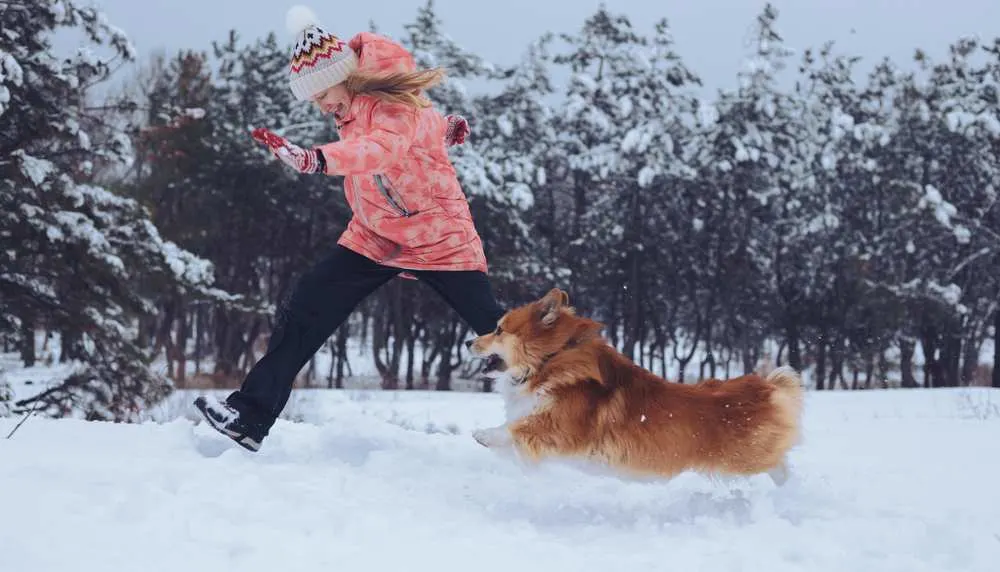
Pros And Cons Of Fluffy Corgis
So, now that you have the answer to the question of when do Corgis get fluffy let’s put some things about this adorable dog breed into perspective. Namely, much like all other canine varieties, fluffy corgis, various perks, and tons of love, but at the same time present different breeding challenges.
So, let’s see if the fluffy Corgis are really the right choice for you and your family.
Looking at the things from a more positive perspective, we should mention that long-coat Corgis are incredibly lovable and appealing. Don’t underestimate this cuteness factor. For instance, small children will be naturally more inclined to spend time with and develop deeper emotions towards the dog breeds they find more attractive.
In this regard, fluffy Corgis are true champs.
Also, the long coat does not have any impact on the inherent Corgi traits we all know and love. They are just as smart, just as joyful, and just as friendly as their short-coat cousins.
That being said, breeding a fluffy Corgi does present some challenges.
The first thing you should keep in mind is that you will need to brush the dog’s coat daily to prevent matting. The growing coat also requires regular baths, trimming, and shaping, which adds even more hours to your schedule. If you are not ready to keep up with these tasks 365 days a year, fluffy dogs are probably not the best option for you.
The second issue is that, as we already mentioned above, in the world of Corgis, the fluffy coat is seen as a deviation and undesirable trait. So, if you ever want to get your puppy in a ring, you will, sadly, be unable to do so.
This is pretty lousy since fluffy Corgis are really no different from their short-coat brothers and sisters. But, be that as it may, the breeders never consciously encourage this trait, and the AKC (American Kennel Club) sees the fluff as the non-eligible fault deviating from the established breeding standard.
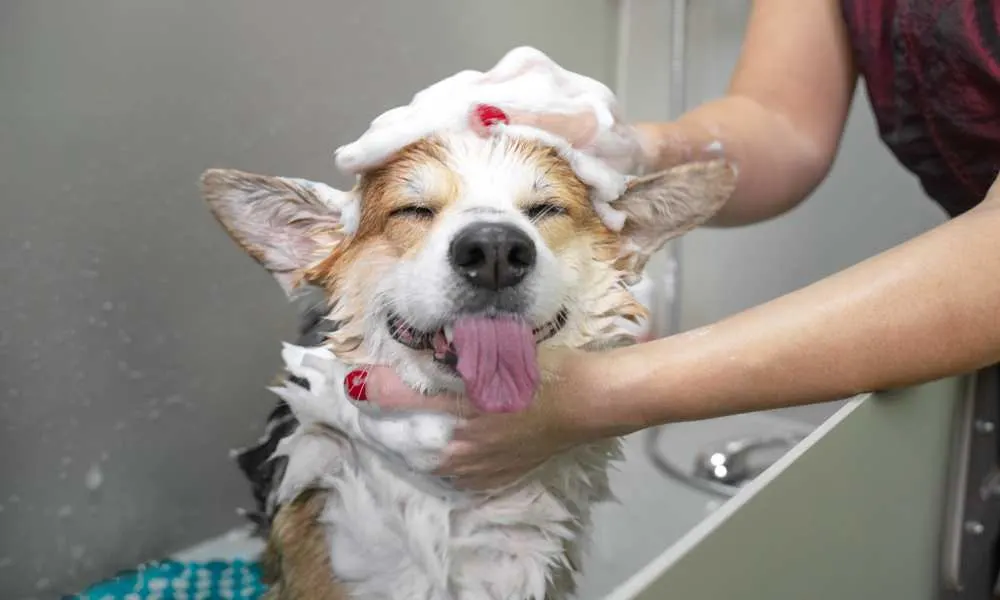
Can You Make Your Corgi Any Fluffier?
Yeah, this may sound somewhat silly since we have already established that fluffiness has very little to do with conscious breeding and everything to do with genetic mutations and pure game of chance.
So, how can you make the dog’s coat any longer or shorter then? Well, if we are to be dead serious, you really can’t.
But, with proper care, you can encourage growth, improve the hair volume and make the puppy’s coat far healthier. In the end, you get happy dogs with shining, fluffy fur. At least to the largest extent their genetic prepositions allow them.
Now let’s see what you can do to make this happen.
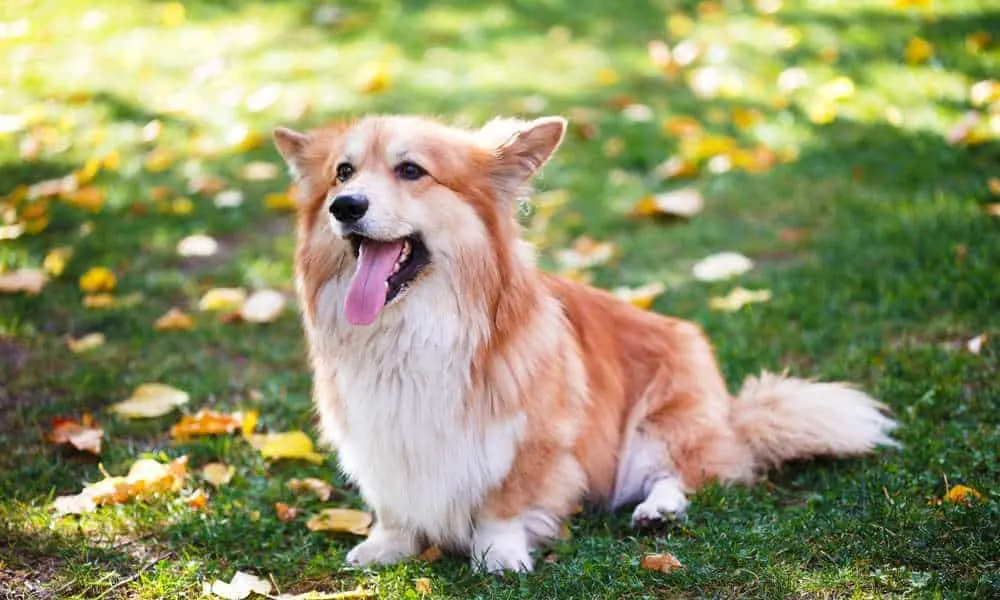
Keep The Puppies Exposed To Sunlight
The coat of your dog goes through various cycles that have evolved to follow the changes in nature. For instance, when the colder months kick in, your puppies will start growing shorter and denser hair to keep them warm during the winter.
Well, when you keep your pets inside too frequently, their bodies will be tricked into thinking that the days are getting shorter and start producing the winter coat.
That is why you should regularly take the puppies outside and keep them exposed to sunlight as much as you can.

Get Yourself A Good Dog Rake Or A Furminator
Both these tools basically perform the same task – they exterminate the dead coat, thus making the remaining hairs stronger, denser, and healthier. In the case of fluffy breeds like Corgis (yes, even in their “default” variety), you will spend quite a lot of time hanging out with these bad boys.
What we suggest is to get your puppies accustomed to these tools (be gentle and reward them after the brushing) as soon as possible. If your pets enjoy brushing, everything will run far, far smoother.
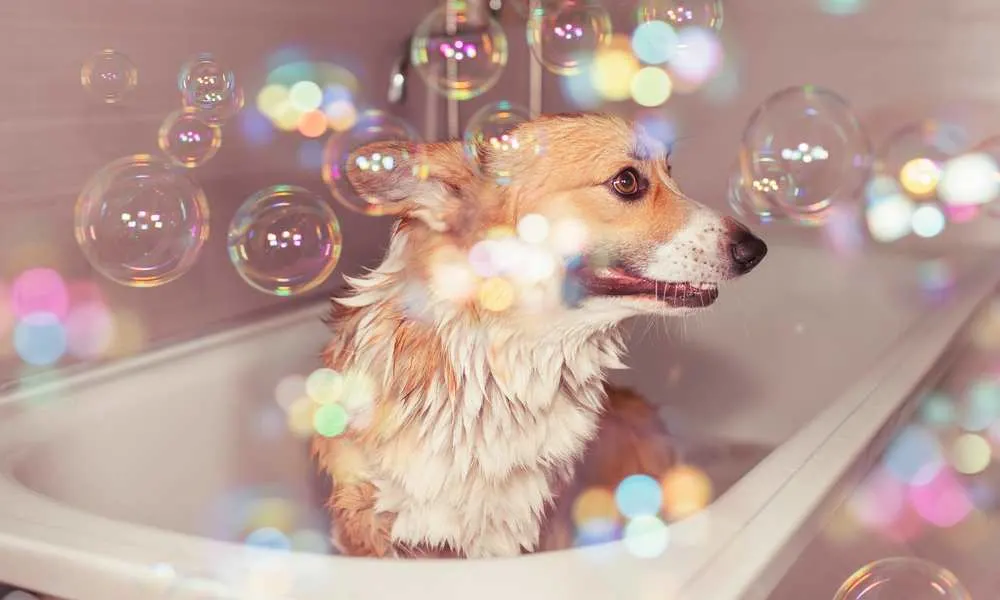
Bath The Puppies With A Quality Shampoo
We are all aware of the endless shampoos and other cosmetic products design to make your hair look “healthy, shining, and strong.” Well, a hair’s a hair, and in this regard, dogs are really not that different.
As a matter of fact, every dedicated pet shop features a whole slew of shampoos and care products designed to make the puppies’ fur healthier, shinier, and yes – even fluffier. Still, be sure to have a good talk with the vet before buying any of them to move all uncertainties off the table.
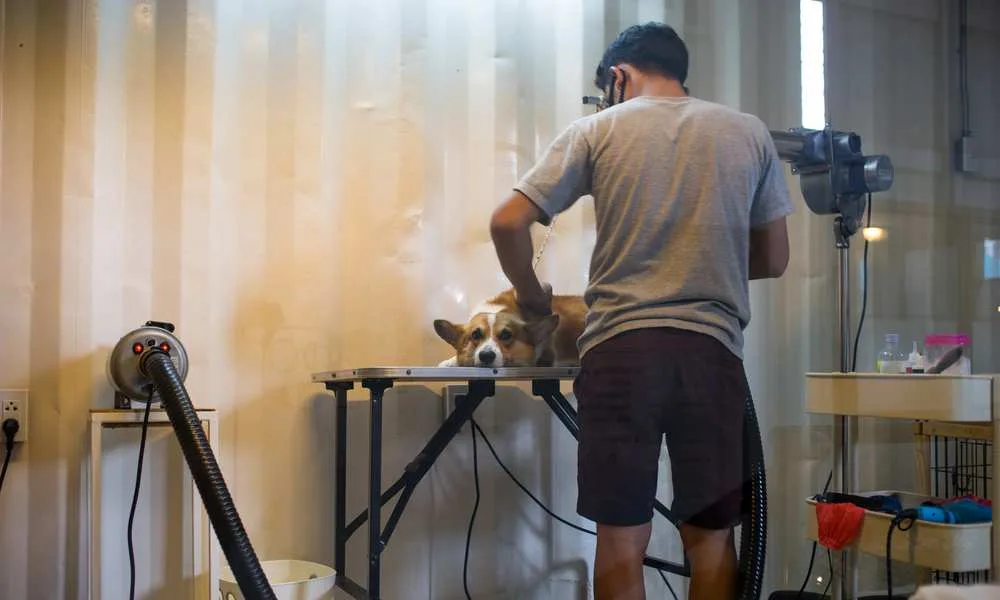
Treat Your Corgi With Professional Grooming Twice A Year
This is yet another instance where we can draw a parallel between dogs and humans – professional grooming can go a long way in making their hairs healthier, longer, and stronger. In the case of puppies, you will get even better results if you treat them with professional grooming during the sensitive shedding periods.
That would be during the famous winter shed and sometimes in the middle of the summer.
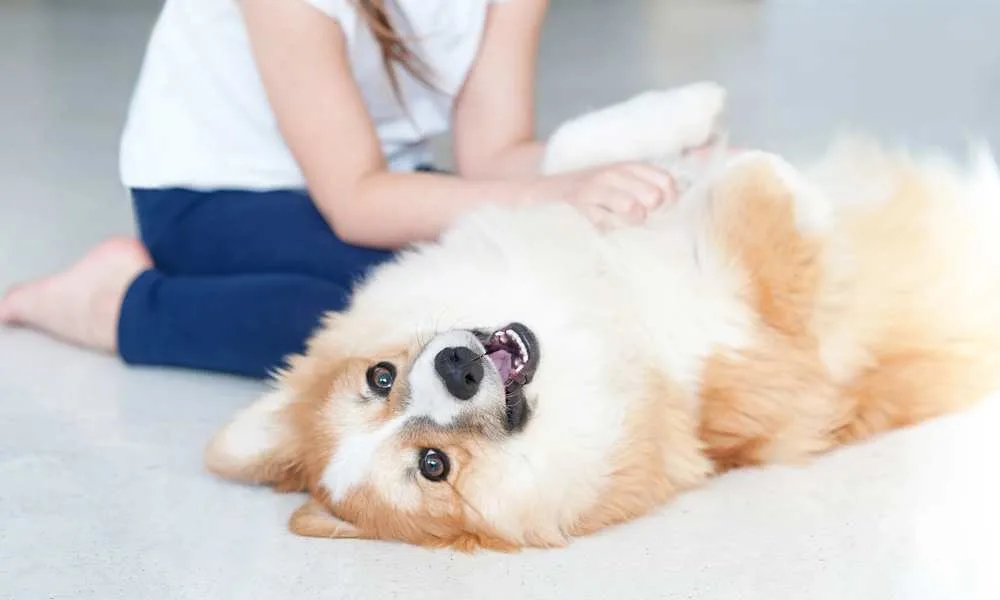
Keep Your Corgis Healthy And Happy
Over a couple of previous decades, we got enough conclusive evidence that illness and stress (especially when the pets are suffering from them over extended periods of time) cause the dogs to excessively shed their coats.
Of course, if that’s the case, the shedding of coat should be the least of your problems, and you should do your best to make your puppies healthy and joyful as soon as possible. In any case, you should leave nothing to chance. If you are continually facing obstacles while grooming the dogs’ coats, be kind and pay a visit to the vet.
Read Also: When Do Corgis Get Their Full Coat?
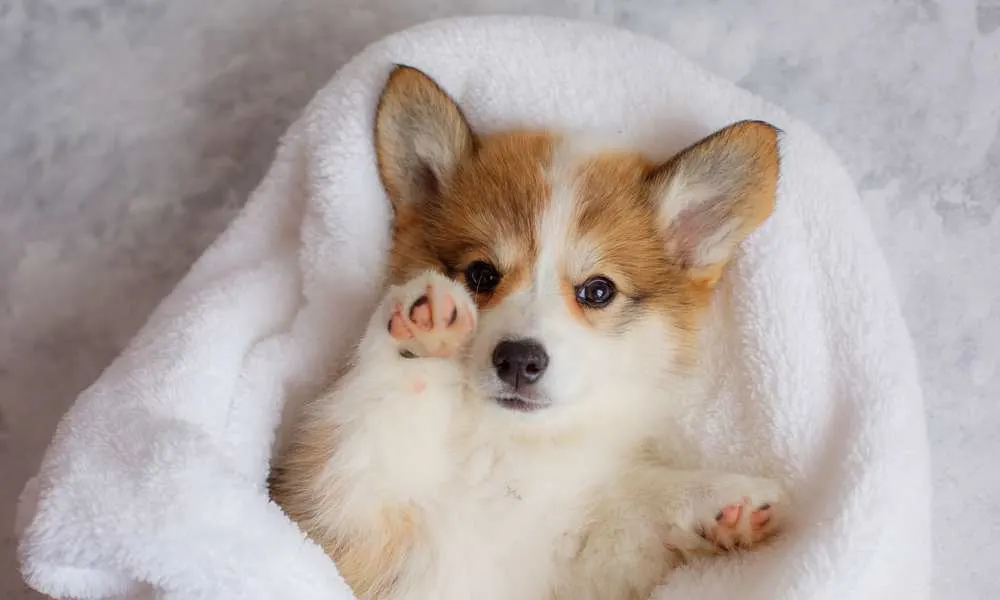
In Conclusions
When all is said and done, we can see that Corgis are one incredibly lovely but somewhat quirky bred where long fluffy hair occurs doesn’t happen as an effort of the conscious breeding as much as the small, cute genetic accident.
So the question you should be asking here is not really when do Corgis get fluffy but will they ever. Fortunately, Mother Nature has arranged that this trait shows itself just in time when young Corgis are old enough to find their new families and move to their new homes.
Be aware, though – fluffy Corgis are beautiful, joyful, and deserve all the love in the world. But, according to AKC regulations, this breed variety is considered a “deviation” and is not eligible for pureblood contests. Also, fluffy Corgis demand quite a lot of care and grooming.
If you are ready to deal with these obstacles, you will probably get one of the happiest and friendliest pets you can imagine.
Read Also: How Long Does It Take For Corgi Hair To Grow Back?

